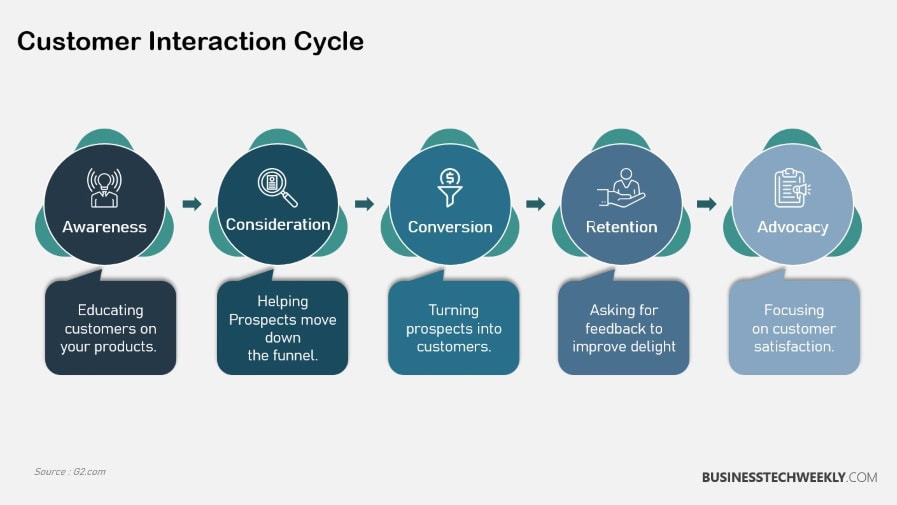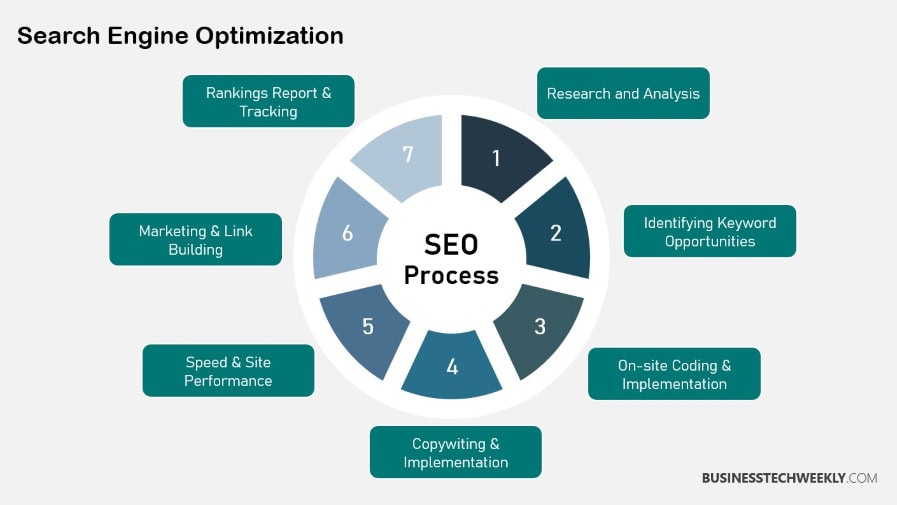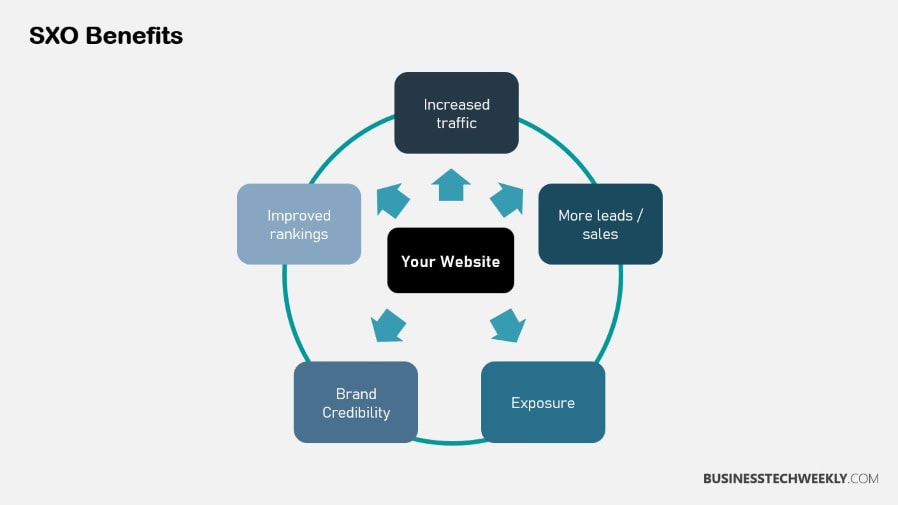Search Experience Optimization (SXO): Everything you need to Know

Ever think about how search engines help make your online experience seamless and instantaneous?
Search experience optimization is the answer.
It’s about creating a better experience and engagement with your brand through search.
Through these clever strategies and approaches, this process optimizes your search results.
Getting to know this important concept is the first step to having more useful, tailored, and delightful search experiences every day.
On this page:
What is Search Experience Optimization (SXO)
Search Experience Optimization (SXO) blends traditional search engine optimization (SEO) practices with an obsession on the user experience.
This magic combination makes for a more inviting and fluid online experience for users. It’s about making sure users have a great experience with your content.
SXO is all about understanding what your users are trying to find. It’s about providing the content they’re looking for, in a manner that’s easy and inviting.
By focusing on user intent, SXO improves the quality of the search experience. It’s not just about bringing people in; it helps to improve the entire experience from the first search to the last engagement.
Definition of SXO
SXO includes all tactics that help you rank for search engines and provide excellent user experience.
This dual focus also means that understanding search intent and user behavior has a huge impact in how SXO strategies are developed.
SXO strives to offer the kind of content that meets the user’s expectations, enticing them to stick around longer and explore further.
For example, if someone searches for “best running shoes,” SXO ensures the content not only ranks well but also delivers a user-friendly page that guides them through options, offers detailed product comparisons, and suggests purchases based on their needs.
Importance of SXO
When users get the content that’s most relevant and engaging to them and what they’re looking for, they’ll become repeat returners.
Every positive interaction with your site immediately translates into stronger brand loyalty.
When users have a pleasurable experience, they’re more likely to trust your brand and interact with it time and time again.
Good SXO increases conversion rates by meeting the needs of users at each stage of the journey. From discovery to decision-making, it crafts a seamless and gratifying journey.
SXO vs Traditional SEO
Traditional SEO is all about the keywords and backlinks, trying to rank higher in the search results.
SXO, in contrast, puts much greater focus on user experience.
This means incorporating learnings from how real people use search into your SEO strategy. Where SEO is focused on improving search rankings, SXO is focused on improving overall user satisfaction and engagement.
For instance, SXO would use data from user interactions to refine content, ensuring it meets user intent and keeps them engaged throughout their visit. SXO also addresses the overall experience, creating a seamless experience that extends further than just showing up in search results.
It’s all about satisfying user intent in a complete, clear-cut way.
SEO |
UX |
SXO |
|
| Objective | Visibility & acquisition | Optimal navigation experience | Acquisition and conversion |
| Use | Attract visitors from Search Engines | Guide users during their visit to the site | Support users until conversion |
| Target | Search Engines | Internet Users | Search Engines and Internet Users |
| Philosophy | Find out what users search for and how | Understand visitors’ expectations and offer them a user-friendly experience | Optimize the success parameters of a website |
Benefits of Search Experience Optimization
Search Experience Optimization (SXO) offers a wealth of advantages, beginning with positive user experience and higher website visitors.
By focusing on the user journey from the initial search to the final interaction, SXO ensures that visitors not only find what they’re looking for but also enjoy the process. An enjoyable experience keeps users coming back, creating a surge in traffic without lifting a finger.
When users feel understood and catered to, they are more likely to engage with content and share it, further amplifying traffic.
SXO is also integral to improving conversion rates. When your website is a resource for users, they come ready to convert. They’re more likely to buy your product, register for your webinar, or download your ebook.
This is the final KPI for all SXO measures, irrespective of what shape the conversion defaults to. SXO brings content and functionality in line with user expectations.
This process helps to forge a relationship between casual visitors and loyal customers, increasing conversion rates tremendously.
Over the long term, SXO helps you earn a positive brand perception. Positive interactions make for positive associations with your brand. When users interact with immersive features and love the tailored experience, they start to form a trust in your brand.
This trust is key for building loyalty over time and creating a strong brand presence.
Customers that love frictionless experiences will become avid advocates for your brand. They sing your praises from the rooftops and encourage other people to try your products or services.
Enhancing User Interaction
Improving user experience is a central focus of successful SEO and SXO.
Clear, intuitive navigation structures are key; they help users navigate their search journeys effectively to find the information they need when they need it. When users can locate what they’re looking for quickly and easily, they can concentrate their attention on content that truly matters.
This is why it pays to include more interactive content formats such as video and infographics. These kinds of formats engage audiences and present complicated information in a refreshing, digestible way. Adding interactive elements such as chatbots and feedback forms increases immediate user interaction.
Users can now interact, pose questions, and receive real-time responses, maximizing their overall satisfaction as a whole.
Improving Search Engine Ranking
After all, a well-optimized user experience is key to high search engine rankings.
Search engines want great content that meets the users’ intent. When users are able to find what they need more quickly and they spend more time on that site, search engines know that content is more valuable.
This is why bounce rates going down and dwell time going up are critical.
This is a powerful indicator to search engines that users identify the content as being helpful, and tends to help boost search rankings.
This move away from classic SEO towards SXO is part of a larger design movement preoccupied with user experience, not only bringing an audience to your doorstep.
Boosting User Engagement
To take user engagement one step further, personalized content recommendations—driven by user behavior—are another effective tactic.
This level of personalization not only makes website users feel valued and understood, but it also keeps them coming back.
The use of social proof, including reviews and testimonials, increases your credibility and consumers’ trust in your brand.
By freshening up content on a regular basis, you can make sure users come back to find new, relevant information every time.
This ongoing interaction is key to building awareness and creating a passionate base of supporters.

Key Components of SXO
Role of User Experience
You understand that the overall experience people have when they come to your site is what really matters.
User experience (UX) is at the heart of SXO.
It’s perhaps the most critical component of SXO, as it directly impacts the experience visitors have on your site.
By prioritizing easy-to-use interfaces, it makes searching for information a breeze. In doing so, it improves the experience and enjoyment people have on your site.
Fully grasping user journeys is imperative.
It also helps you determine where to place images, calls-to-action, and other design elements to maximize their impact.
Don’t limit yourself to just congratulations—testing and tweaking UX elements on a continuous basis has been shown to increase user satisfaction.
SXO is more than getting people to your site – it’s about delivering a great experience for their entire journey.
RELATED: Impact of User Experience on SEO
Significance of Content Quality
Content quality goes beyond simply creating great writing. It’s all about being relevant, being accurate, and not losing your readers. Relevant, valuable content answers user search intent from multiple angles, catering to their needs in ways that stand out.
It’s by doing this that we build trust and authority, the bedrock of SXO. Once users find out that your site has thorough information, they’ll spend more time on the site.
Frequent updates have also been shown to improve chances of conversion, so it’s a great indicator of SXO success.
This evolution from SEO to SXO is all about leading users along their journey. We develop content that engages, guiding them naturally from search to conversion.
RELATED: The Art of Creating Valuable Content
Importance of Site Speed
You can’t dismiss site speed. We all know that faster loading times lead to happier users and less bounces.
Tools such as Google PageSpeed Insights are a great place to start to measure and improve your site speed.
This improves the user experience by keeping visitors on your page longer and also leads to increased search engine rankings.
With over 10 trillion searches being performed on Google, SXO must evolve even faster.
AI chatbots are also becoming increasingly popular and are expected to take over 25% of search engine usage.
Improving site speed is the perfect way to ensure your SXO strategy is always up to date and relevant.
This improvement leads users seamlessly from the first search result to the last click.

Strategies for Effective SXO Implementation
To achieve seo success, it is crucial to layer in foundational SEO tactics while implementing an efficient sxO strategy.
Begin with keyword research, which is essential for understanding audience behavior and determining what users are searching for. This approach helps you meet their needs effectively.
Be sure to optimize on-page elements, including meta tags and headings, to facilitate seamless site navigation and ensure that search engines can index your content without any issues. Furthermore, being mobile responsive enhances the overall user experience across devices.
Lastly, incorporating structured data is vital for improving your search visibility and ensuring that your content reaches potential customers effectively.
1. Master SEO Basics
Without a firm understanding of SEO basics, it’ll be hard to establish an effective SXO strategy.
By remaining current with changing SEO trends and algorithms, you’ll ensure your SXO approach will continue to be effective.
Staying up-to-date with changes in search engine behavior and user expectations ensures you’re always adapting and staying relevant.
2. Focus on User Experience
Focusing on user-focused design principles creates better experiences for all users.
Analyze user feedback to find user pain points to target.
Building empathy into your team helps them better understand what users need and want, allowing you to develop a more intuitive experience.
3. Develop Quality Content
Research and understand your audience’s interests and pain points.
Use clear, concise language to convey information.
Incorporate visuals to complement written content. Regularly update content for relevance and accuracy.
4. Optimize Site Speed
Big images and tons of scripts are common culprits that bog sites down.
Utilize tools such as Google PageSpeed Insights to uncover areas of concern.
Using content delivery networks (CDNs) can decrease the time it takes for information to load around the world.
Keep in mind, as much as 80% of users will abandon a site if it doesn’t load in under three seconds.
5. Understand User Behavior and Intent
By analyzing user behavior data, you can uncover user behavior patterns that can help inform and guide your content strategy. Google Analytics is an essential platform to measure user engagement and interactions.
Finding opportunities with SXO Journey mapping insights allows you to better align your content and website navigation with user expectations.
6. Prioritize Mobile Optimization
Consider how important mobile users are becoming.
Test mobile usability frequently to create a seamless experience.
Responsive design is better for users and search engines alike.
7. Use Internal Linking
Improve site navigation by guiding users to related content.
Enhance SEO by distributing page authority.
Help search engines crawl the site more efficiently. Increase user time on site by encouraging exploration.

Evaluating SXO Performance
Set specific goals for your SXO initiatives. Create relevant KPIs to properly measure your performance.
Conversion rate is the most important key performance indicator of them all.
It demonstrates how well we’re delivering a unified experience, leading users from their initial search all the way through to conversion.
Conversion can be anything from signing up for a newsletter to an actual sale. Knowing not only what the searcher intends but also how they view the world allows you to customize your SXO strategy.
Analyzing performance metrics on an ongoing basis is critical to identify what is working, what isn’t and where there are opportunities to improve.
Metrics such as organic traffic, bounce rates, and conversion rates need to be tracked diligently.
These user engagement metrics are an excellent place to start.
For example, monitoring time on page and pages per session can show you how engaging your content is to visitors.
Surveys and other feedback tools can help measure user satisfaction and offer insights to help you continue to improve your strategy.
Key Metrics for Evaluation
Determining which metrics are most important is an integral first step.
Organic traffic shows how well your site is able to bring in visitors.
Bounce rates tell you the percentage of people who visit only one page and then leave.
While conversion rates, on the other hand, measure how well we’re able to convert visitors into customers.
Time on page and pages per session are important for evaluating user engagement.
Tools for Performance Measurement
-
Google Analytics: Tracks user behavior and traffic sources.
-
Google Search Console: Monitors site performance in search results.
-
PageSpeed Insights: Assesses and optimizes site speed.
-
Heatmap tools: Visualizes user interactions, identifying improvement areas.
By using A/B testing, you can measure which strategies are working best.
This methodology can help you continuously test new variations and figure out what drives the most user engagement and conversions.
The transition from SEO to SXO is an important one, looking past just search engine optimization to improve the complete user experience.
Key Points to Remember
Search experience optimization (SXO) consistently influences how people find and relate to your content.
By prioritizing easy-to-understand navigation, visually appealing design, and purposeful content that speaks to visitors’ interests, you help ensure that every visit is unforgettable.
- Search Experience Optimization (SXO) is the blending of SEO and user experience to create a smooth journey from search to site engagement. This improves the experience for users, which search engines like Google are always aiming to promote.
- In contrast to the traditional SEO approach of targeting keywords and rankings, SXO involves aligning with the user’s intent and providing a solution. This personalized approach increases both retention and conversion rates dramatically.
- As with any good SXO, effective SXO boils down to understanding how users behave. By creating content that serves their needs, it instills brand loyalty and improves user experience.
- These two factors—which fall squarely under the SXO umbrella—quality content and site speed, are key to a great search experience that engages users and search engines alike.
- By implementing SXO strategies like an intuitive navigation structure and personalized content, you can improve user interaction and promote return visits.
- It’s important to regularly evaluate metrics like bounce rates and conversion rates to accurately measure SXO performance. This provides the opportunity to recalibrate our tactics for continuous improvement.

